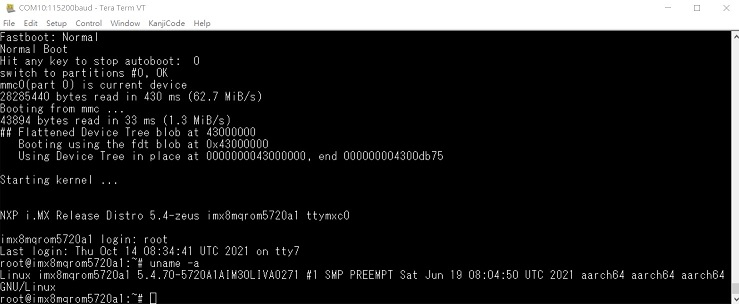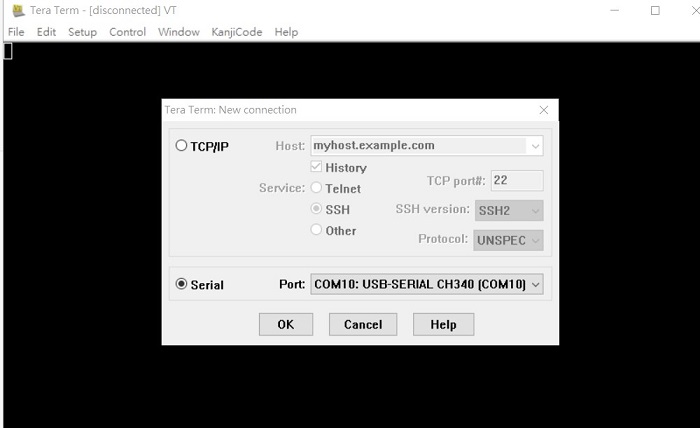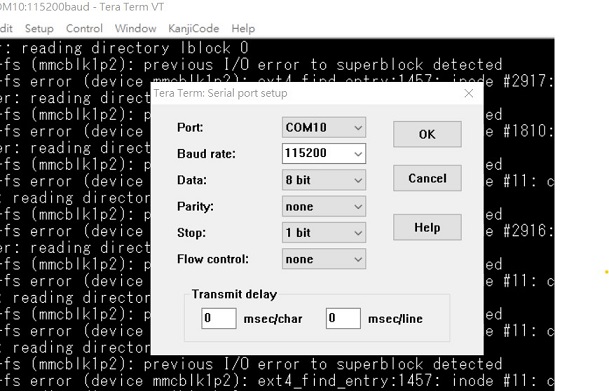ROM-5720 user guide
Contents
產品介紹(Product introduction )
產品特性(Product Features)
- NXP i.MX 8M processor with dual or quad Arm Cortex A53 cores
- 1 x Arm Cortex-M4 core
- Onboard 2GB LPDDR4 memory and eMMC 16GB
- 1 x HDMI2.0 up to 4096 x 2160, 1 x 4-Lane MIPI DSI
- 2 x USB3.0, 4 x USB2.0, 4 x UART, 4 x I2C, 12 x GPIO, 1 x PCIe2.0, 1 x 4-lane MIPI CSI camera input, 1 x 2-lane MIPI CSI camera input and 2 x Gigabit LAN
- Supports OpenGL ES 3.1/3.0/2.0/1.1, Open CL 1.2, and Vulkan hardware accelerators
- Supports 4Kp60 HEVC/H.265 decoding with HDR
- Cable pack & panel included
- Evaluative image & test utility built-in
產品官網連結(Product official website link)
硬件接口說明(Hardware interface introduction)
接口布局和尺寸(Layout and Sizes)
ROM-5720 接口布局圖 Board Dimension Layout
ROM-DB5901 接口布局圖 Board Dimension Layout
主板内置插针式引脚排序方式 (Pin Header defination)
Internal I/O
| Position | Description | Connector Type |
| BAT1 | PIN Header for Battery | WAFER 8P 2.54mm 180D(M) DIP A2543WV2-8P |
| BH1 | RTC Battery Holder | BATTERY HOLDER 24.9*23.4*8.9 CR2032 BH800.4GG |
| CAN1 | CANBus Port 1 | BOX HEADER 5x2P 2.54mm 180D(M) DIP 23N6960-10S10 |
| CAN2 | CANBus Port 2 | BOX HEADER 5x2P 2.54mm 180D(M) DIP 23N6960-10S10 |
| COM1 | COM Port 1 | BOX HEADER 5x2P 2.54mm 180D(M) DIP 23N6960-10S10 |
| COM3 | COM Port 3 (Debug Port) | BOX HEADER 5x2P 2.54mm 180D(M) DIP 23N6960-10S10 |
| CN4 | PCIex1 Connector 1 | PCIEXPRESS 36P 180D(F) DIP 2EG01817-D2D-DF |
| CN5 | PCIex1 Connector 2 | PCIEXPRESS 36P 180D(F) DIP 2EG01817-D2D-DF |
| CN6 | PCIex1 Connector 3 | PCIEXPRESS 36P 180D(F) DIP 2EG01817-D2D-DF |
| CN11 | SATA Connector | Serial ATA 7P 1.27mm 180D(M) DIP WATM-07DBN4A3B8 |
| CN12 | SATA Power Connector | WAFER 4P 2.5mm 180D(M) DIP 24W1161-04S10-01T |
| CN22 | GPIOx8 sets | PIN HEADER 10x2P 2.0mm 180D(M) DIP 21N22050 |
| CN25 | MXM 3.0 Connector | MXM Conn. 314P 90D(F) SMD AS0B821-S78B-7H |
| CN26 | M.2 Key E Slots | NGFF 75P 0.5mm 90D(F) H=4.2mm SMD AS0BC21-S40BE |
| CN38 | FAN (Reserved) | WTB Con. 3P 2.54mm 180D(M) DIP A2543WV0-3P-6T-5e |
| CN39 | MIPI-CSI1 (FPC, 4-Lane | FPC 39P, 0.6mm, H0.9mm |
| CN40 | MIPI-CSI0 (FPC, 2-Lane) | FPC 39P, 0.6mm, H0.9mm |
| CN41 | MIPI-CSI0 (Mini-SAS, 2-Lane) | Mini SAS 36P/0.8mm/(M)/LCP/VA/G15u/ S/BK/W |
| CN42 | MIPI-CSI1 (Mini-SAS, 4-Lane) | Mini SAS 36P/0.8mm/(M)/LCP/VA/G15u/ S/BK/W |
| ESPI_CN1 | ESPI | PIN HEADER 6x2P 2.0mm180D(M) SMD 21N22050-12M00B |
| I2C_GP_1 | I2C Pin Header | WAFER BOX 4P 2.00mm 180D(M) DIP 721-81-04TW00 |
| I2C_CN3 | Audio Codec Board | PIN HEADER 2x10P 2.54mm 180D(M) DIP 21N22564 |
| LVDS0 | LVDS0 | Wafer 2x20P/1.25mm/(M)/NY9T/VA/GFL/ S/WH/W |
| LVDS_BK_PWR | LVDS0 Back Light | WAFER BOX 5P 2.0mm 180D(M) DIP A2001WV2-5P |
| LVDS1 | LVDS1 | Wafer 2x20P/1.25mm/(M)/NY9T/VA/GFL/ S/WH/W |
| LVDS1_BK_PWR | LVDS1 Back Light | WAFER BOX 5P 2.0mm 180D(M) DIP A2001WV2-5P |
| SD1 | SD Card Slot | SD CARD 9P 90D(F) SMD WK2192CS3D- 7H |
| SPI_CN1 | SPI Pin Header | PIN HEADER 4x2P 2.54mm 180D(M) SMD 21N22564 |
| SW2 | Reset Button | TACT SW STS-091 SMD 4P H=3.8mm |
| SW4 | SLP Button | TACT SW STS-091 SMD 4P H=3.8mm |
| SW5 | Power Button | TACT SW STS-091 SMD 4P H=3.8mm |
| USB0_OTG1 | USB OTG | Micro USB 5P/0.65mm/(F)/NY9T/GFL/ RA/S/BK/B |
| USB-4-5 | USB Port 4, Port 5 | PIN HEADER 2x5P 2.0mm 180D(M) SMD 21N22050 |
Rear I/O
接口引脚定義 (Pin definitions)
- 電池(BAT1) & 電池扣(BH1)
- CAN(CAN1,CAN2)
- 串口(COM_DB(COM3)、COM1、UART0 、UART2)
- 显示接口(LVDS、LVDS Backlight、HDMI、DP)
- LAN接口(LAN)
- USB接口(USB1-2、USB-4-5、USB Type C、USB OTG)
- 音频接口(Audio Output &Audio Codec)
- 电源及指示灯和开关机复位按钮(Power 、LED、Power Button、Reset Button、Sleep Button)
- GPIO接口
- MINI_PCIE接口_M.2接口_SPI、I2C_接口
机械尺寸 (Mechanical Characteristics)
ROM-5720
Dimensions: SMARC form factor size, 82mm (D) x 50 mm(W)
Height on Top: Under 3.0 mm base on SPEC definition (without heat sink)
Height on Bottom: Under 1.3 mm base on SPEC definition
快速入门 (Quick Start)
系统下载 (OS Download)
Linux 燒錄方法 (Linux Flash eMMC Method)
使用Flash tool 燒錄鏡像到eMMC (Flash image into eMMC by Flash Tools)
Step0: 檢查SD卡在Linux 環境的代號 (check SD card symbol in Linux system)
Step1: 創造一張可開機的SD 卡 (Create a bootable SD card)
Step2: 將可開機的SD 卡插入底板SD卡卡槽(Plug the SD card into Carrier board 's SD card slot)
Step4: 確認開機選擇指撥開關
SD 卡開機模式:
Step3:打開電源 和 終端機 (Turn on the Power & Terminal)
Step4: 壓縮flash tools 檔案,並複製到U盤中(the flash tools file , then copy to USB Disk)
Step 5: Yocto 系統會自動掛載 U盤 在(run/media/sda1下)
並拷貝 5720A1AIM30LIVA0271_iMX8M_2G_flash_tool.tgz 到根目錄 (copy the file into Yocto system)
Commnd : cp -a 5720A1AIM30LIVA0271_iMX8M_2G_flash_tool.tgz /
在Yocto 系統中解壓縮(Unzip the file in Yocto system on ROM-5720)
Step 6. 燒錄eMMC 鏡像 (flash image into eMMC flash by flash tool file)
command : ./mksd-linux.sh /dev/mmcblk0
Step 7 . 結束燒錄後, 請改變撥碼開關至 1 on , 其他 off (eMMC開機模式) (Finish the flash process, please chanage the switch (SW1) to 1 on , others off )
移除SD卡, 拔除電源 ,改變撥碼開關 (unplug the SD card , turn off power , change the SW1 switch to eMMC mode (1 on , others off)
eMMC mode : 1 on , others off
Step 8. 重新上電開機 ( Turn on the power , then check the Debug message)
Debug 串口調試 (Debug port Setting)
以 Tera Term 为例介绍如何使用串口调试功能
Baud Rate波特率:115200 Data 数据位:8 Parity 奇偶校验:无 Stop 停止位:1 Flow Control流控:无
Tera Term Tool
Check the Sriel port in Device Manager (查看PC端的串口号):
if you can not identify the Serial device , please check your serial driver.
Debug port connection (串口連接)
Log into Terminal Tool (进入串口调试终端):
Linux系统的基本使用(Linux System Basic Operating Method)
UUU 使用方法(USB Connection (OTG port))
Display Setting (ROM-5720)
U-boot Command :
setenv fdt_file imx8mq-rom5720-a1-dcss-adv7535.dtb env save boot
Yocto 2.5
- Display
- DSI to HDMI
- adv-imx8mq-rom5720-a1-dcss-adv7535-b3.dtb
- adv-imx8mq-rom5720-a1-lcdif-adv7535.dtb
- DSI
- auog101uan02
- adv-imx8mq-rom5720-a1-dcss-auog101uan02.dtb
- auog101uan02
- Dual Display
- DSI to HDMI + HDMI
- adv-imx8mq-rom5720-a1-dual-display.dtb
- DSI to HDMI + HDMI
- DSI to HDMI
- M.2 SDIO
- Adjust CN43~CN48
- adv-imx8mq-rom5720-a1-m2-sdio.dtb
- M.2 I2S
- adv-imx8mq-rom5720-a1-m2-i2s.dtb
Yocto 3.0
- Display
- DSI to HDMI
- imx8mq-rom5720-a1-dcss-adv7535.dtb
- imx8mq-rom5720-a1-lcdif-adv7535.dtb
- For weston ui
- modify /etc/xdg/weston/weston.ini
- drm-device=card2
- modify /etc/xdg/weston/weston.ini
- DSI
- auog101uan02
- imx8mq-rom5720-a1-dcss-auog101uan02.dtb
- auog101uan02
- Dual Display
- DSI to HDMI + HDMI
- imx8mq-rom5720-a1-dual-display.dtb
- For weston ui
- modify /etc/xdg/weston/weston.ini
- drm-device=card1
- modify /etc/xdg/weston/weston.ini
- DSI to HDMI + HDMI
- DSI to HDMI
- M.2 SDIO
- Adjust CN43~CN48
- imx8mq-rom5720-a1-m2-sdio.dtb
乙太網路使用方法(Ethernent Testing Method)
Command : ifconfig
Command: Ping - I eth1 8.8.8.8
WiFi使用方法(WIFI Testing Method)
Command : #killall wpa_supplicant # ifconfig wlan0 up # wpa_passphrase "SSID" "PASSWORD" > /tmp/wpa.conf # wpa_supplicant -BDwext -iwlan0 -c/tmp/wpa.conf # udhcpc -b -i wlan0 ping 8.8.8.8 PING 8.8.8.8 (8.8.8.8) 56(84) bytes of data. 64 bytes from 8.8.8.8: icmp_seq=1 ttl=54 time=2.10 ms 64 bytes from 8.8.8.8: icmp_seq=2 ttl=54 time=2.10 ms
4G使用方法(4G Testing Method)
Command:
Test 4G: (EWM-C117FL06E - USB)
Step 1: Connect EWM-C117FL06E to Mini PCIE slot on 9680015491 and connect
the card to CN6 PCIe_D slot on ROM-DB5901.
Step 2: Connect the antenna 1750007990-01 to the SMA (F) connector on
9680015491 and connect the IPEX connector to MT1 on EWM-C117FL06E module.
Step 3: Connect the Mini USB cable from 9680015491 to USB 2.0 Type A port on
ROM-DB5901.
Step 4: Power on and execute the pppd command to connect to the network.
GPIO使用方法(GPIO Operating Method)
Loop-back Test (Take GPIO4 and GPIO5 as examples) Step 1: Connect GPIO4 and GPIO5 Step 2: Export GPIO interface root@imx8mqrom5720a1 : ~# echo 0 > /sys/class/gpio/export root@imx8mqrom5720a1 : ~# echo 132 > /sys/class/gpio/export Step 3: Set direction root@imx8qxprom5720a1 : ~# echo out > /sys/class/gpio/gpio1/direction root@imx8qxprom5720a1 : ~# echo in > /sys/class/gpio/gpio2/direction Step 4: Read value and set output value then check root@imx8mqrom5720a1 : ~# cat /sys/class/gpio/gpio2/value 1 root@imx8mqrom5720a1 : ~# echo 0 > /sys/class/gpio/gpio1/value root@imx8mqrom5720a1 : ~# cat /sys/class/gpio/gpio2/value 0
串口使用方法(Serial Port Operating Method)
RS-232 Test
COM0: CN15A:上(SER0/UART3): /dev/ttymxc2
COM2: CN15B:下(SER2/UART2): /dev/ttymxc1
COM3: (A53 debug/SER3/UART1): /dev/ttymxc0
COM1: (M4 debug/SER1/UART4): /dev/ttymxc3
Loopback test (eg. ttymxc1)
Before loopback test, we should connect tx and rx
stty -F /dev/ttymxc1 115200 stty -F /dev/ttymxc1 ?echo cat /dev/ttymxc1 & echo test > /dev/ttymxc1
=== 蓝牙使用方法(BlueTooth Operating Method) ===
Command :
$ hciconfig hci0 up
$ bluetoothctl
$ discoverable on
$ pairable on
$ scan on
[NEW] FC:18:3C:8D:75:F4 myphone
$ scan off
$ pair FC:18:3C:8D:75:F4
$ connect FC:18:3C:8D:75:F4</pre>
遠程訪問及文件傳輸(Remote Access and File Transimmion)
查看主板IP位址 ( Chech IP Address ):
Command : ifconfig
Windows下SSH访问及文件传输
SSH Remote Log into Device
- SSH远程登录,以putty选择putty.exe(或者使用Xshell、SecureCRT等类似软件)
*需要设置远程设备的IP、通讯端口(默认22)、通讯方式,登录后验证用户名密码
通用方法(General Method)
=== 查看CPU温度(Check CPU Temperature) ===
root@imx8qxprom5720a1:/# cat /sys/devices/virtual/thermal/thermal_zone0/temp 44600
# 或者直接以度爲單位顯示 echo $[$(cat /sys/class/thermal/thermal_zone0/temp)/1000]° >>> 45°</pre>
=== 查看CPU频率(Check CPU Frequency) ===
cat /sys/devices/system/cpu/cpu0/cpufreq/cpuinfo_cur_freq
>> 900000
cat /sys/devices/system/cpu/cpu0/cpufreq/cpuinfo_max_freq
>> 1200000
=== 查看内存容量(Check Memory Capacity) ===
root@imx8qxprom5720a1:/# busybox free -m
total used free shared buffers cached
Mem: 1794920 516080 1278840 17252 9852 80292
-/+ buffers/cache: 425936 1368984
Swap: 0 0 0
=== 查看存储容量(Check Storage Capacity) ===
root@imx8qxprom5720a1:/# busybox df -h
Filesystem Size Used Available Use% Mounted on
/dev/root 13.4G 1.7G 11.1G 13% /
devtmpfs 395.8M 4.0K 395.8M 0% /dev
tmpfs 876.4M 0 876.4M 0% /dev/shm
tmpfs 876.4M 16.5M 859.9M 2% /run
tmpfs 876.4M 0 876.4M 0% /sys/fs/cgroup
tmpfs 876.4M 4.0K 876.4M 0% /tmp
tmpfs 876.4M 280.0K 876.2M 0% /var/volatile
/dev/mmcblk0p2 13.6G 1.7G 11.3G 13% /run/media/mmcblk0p2
/dev/mmcblk0p1 63.9M 23.4M 40.5M 37% /run/media/mmcblk0p1
/dev/mmcblk1p1 63.9M 23.4M 40.5M 37% /run/media/mmcblk1p1
tmpfs 175.3M 88.0K 175.2M 0% /run/user/0
root@imx8qxprom5720a1:/#
=== 網路Ping測試(Ping Network Testing) ===
ping 8.8.8.8
PING 8.8.8.8 (8.8.8.8) 56(84) bytes of data.
64 bytes from 8.8.8.8: icmp_seq=1 ttl=54 time=2.10 ms
64 bytes from 8.8.8.8: icmp_seq=2 ttl=54 time=2.10 ms</pre>
=== 設置RTC (RTC Setting) ===
root@imx8qxprom5720a1:/# systemctl stop ntpdate.service
root@imx8qxprom5720a1:/# date 090816072021 && hwclock -w && date
Wed Sep 8 16:07:00 UTC 2021
Wed Sep 8 16:07:00 UTC 2021
root@imx8qxprom5720a1:/# date
Wed Sep 8 16:07:06 UTC 2021
root@imx8qxprom5720a1:/#
Mic錄音 (Mic record)
# amixer set Mic 20%
# arecord -D plughw:0,0 -r 16000 -f S16_LE ./f-16000.wav
# aplay ./f-16000.wav
PCIe裝置移除與rescan
root@imx8qxprom5720a1:/# echo "1" > /sys/bus/pci/devices/0000\:01\:00.0/remove --eth1 will be remove (check with ifconfig)
root@imx8qxprom5720a1:/# echo "1" > /sys/bus/pci/rescan --eth1 will back after run this command.
Linux BSP編譯方法(Linux BSP Compile Method)
Yocto 4.2
Yocto 3.0
===============================================================================================================================================
Build known issue
如果有驗證上的錯誤 請使用以下的方法
### repo sync failed with Server certificate verification failed. CAfile: /etc/ssl/certs/ca-certificates.crt CRLfile: none
============================================================
export GIT_SSL_NO_VERIFY=1
#or
git config --global http.sslverify false
============================================================
nnshark error
https://community.nxp.com/t5/i-MX-Processors/Yocto-3-3-5-10-72-BSP-Build-Fail/m-p/1487902

























